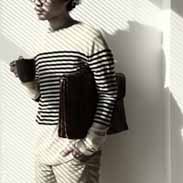Biology Topic 2 Lab Tools and Lab Skills
Unlock all answers in this set
Unlock answersquestion
separates mixtures based on density
answer
centrifuge
question
helps scientists see things they can't with the naked eye
answer
microscope
question
uses 1 lens to form an image and 1 eyepiece
answer
simple light microscope
question
uses 2 lenses to form an image and 1 eyepiece
answer
compound light microscope
question
image is reversed
answer
simple and compound light microscopes
question
produces 3D images of specimens image is not reversed and 2 eyepieces
answer
stereo dissecting microscope
question
shines a beam of electrons through the specimen that must be dead before being viewed
answer
electron microscope
question
the system of measurement used by scientists worldwide
answer
metric system
question
the number that the multiples of the metric system are based on
answer
10
question
how long something is
answer
length
question
the amount of matter in an object
answer
mass
question
the amount of space something takes up
answer
volume
question
the amount of heat in an object
answer
temperature
question
used to measure length
answer
metric ruler
question
used to measure mass
answer
balance
question
used to measure the volume of liquids
answer
graduated cylinder
question
used to measure temperature
answer
thermometer
question
the metric unit for length
answer
meter
question
the metric unit for mass
answer
gram
question
the metric unit for volume
answer
liter
question
the metric unit for temperature
answer
celsius
question
the concave surface of a liquid in a graduated cylinder
answer
meniscus
question
millimeters (are the lines that are one tenth each number on the metric ruler)
answer
mm
question
centimeters (are the lines that are each number on the metric ruler)
answer
cm
question
contains the ocular lens
answer
eyepiece
question
holds the objective lenses and can be rotated to change magnification
answer
revolving nosepiece
question
magnification ranges from 4 times to 40 times
answer
objective lenses
question
hold the slide in place
answer
stage clips
question
supports the slide being viewed
answer
stage
question
projects light upwards through the diaphragm the specimen and the lenses
answer
light source
question
used to support the microscope when carried
answer
arm
question
moves the stage up and down for focusing
answer
coarse adjustment knob
question
moves the stage slightly to sharpen the image
answer
fine adjustment knob
question
regulates the amount of light on the specimen
answer
diaphragm
question
supports the microscope
answer
base
question
eyepiece magnification times objective magnification
answer
total magnification
question
the area you see when you look into a microscope
answer
microscope field of view
question
a technique used to make cell parts more visible
answer
staining
question
the scale used to determine if a solution is an acid a base or a neutral
answer
pH
question
determines whether solutions are an acid or a base
answer
litmus paper
question
an acid turns blue litmus paper red and a base turns red litmus paper blue a neutral does not change the color
answer
how litmus paper works
question
is used to determine the actual pH of a solution
answer
pH paper
question
the paper is dipped in the solution and it turns a color that is then compared to a chart that shows the pH
answer
how pH paper works
question
the pH scale is 0 to 14 where 7 is neutral 0 to 6 is an acid and 8 to 14 is a base, the colors are neutral is greenish-yellow an acid is red to yellow and a base is green to violet
answer
color and the pH scale
question
turns yellow in the presence of carbon dioxide
answer
Bromthymol blue
question
turns from blue to yellow orange brick red in the presence of glucose
answer
Benedict's solution
question
turns from amber to blue-black in the presence of starch used for the staining of plant cells
answer
Lugol's iodine
question
help us visualize numerical data in an organized way that is easeier to interpret
answer
graphs
question
used to show a comparison between multiple objects
answer
bar graphs
question
used to compare parts of a whole
answer
pie graphs
question
used to show the relationship between variables
answer
line graphs
question
as x increases y increases
answer
direct relationship
question
as x increases y decreases
answer
inverse relationship
question
as x increases y remains the same
answer
constant relationship
question
is always on the x-axis
answer
independent variable
question
is always on the y-axis
answer
dependent variable
question
enhances and contrasts the image of transparent objects
answer
phase contrast microscope
question
turns from clear to bright pink in the presence of either carbon dioxide or a base
answer
Phenolphthalein solution
question
turns from light blue to purple in the presence of protein
answer
Biuret solution
question
used for the staining of animal cells
answer
Methylene blue



